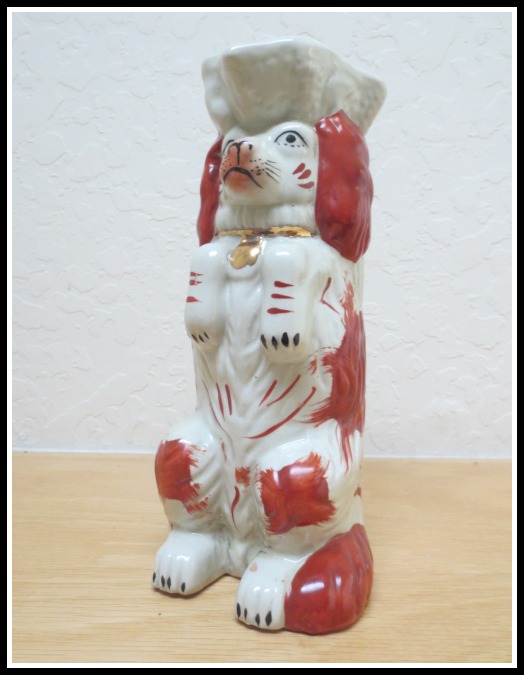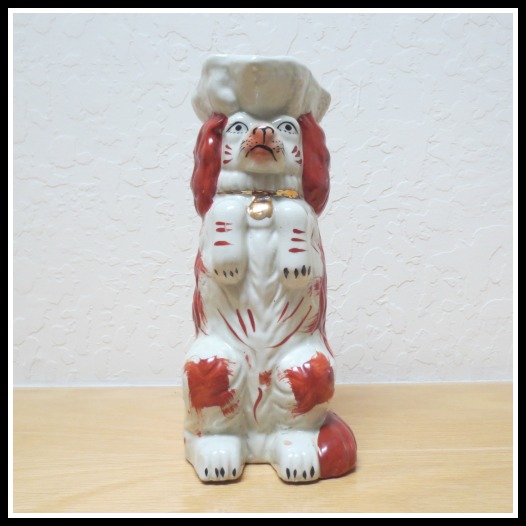After a lovely chat with a friend over coffee on Saturday I headed to some nearby boutique thrift stores for a quick browse. I don’t often buy much in any of these stores because the prices don’t lend themselves to reselling. But still it’s fun going every now and then.
Today I spotted an appealing dog jug sitting on the jewelry counter. I picked it up and gave it a good look. It looked like Staffordshire pottery, but I wasn’t sure. And it was pricey.

I set it down and roamed the rest of the small store.
Staffordshire Pottery figures are earthenware figures made in England, mainly in the county of Staffordshire, but also in other counties and in Scotland. The main groups are:
Madelena Antiques & Collectables
Circa 1780-1840 Pratt Ware figures
Circa 1800-1837 Pre-Victorian Staffordshire figures
Circa 1837-1900 Victorian Staffordshire figures
Circa 1890-1960 Kent
Then I went back to give the jug another look. It was heavy, hand painted and had signs of age, but was it worth the price? I set it back down. As I wandered around the store again I decided to do a quick search on the jug.

Hmmm. It’s a “King Charles Spaniel begging toby jug” and even if it is an older replica, it might have a little meat on the bone…maybe! I dithered for a bit longer and then went over and picked it up for the last time and headed to the checkout counter. Well, honestly, it is a bit of fun, isn’t it?

I’ve been researching Staffordshire dogs for hours and here are some of the potential repro signs. There are sites who suggest similar signs and other sites who contradict some in this list!

Here’s what I know about my spaniel:
- It has no maker’s mark on the bottom, nor has any been scraped off, which is good.
- The gold trim is still quite brassy indicating a post-1875 piece.
- The rust is an appropriate Staffordshire color.
- Painting has a folk art feel as does real Staffordshire which was frequently painted quickly by women and children. But this would be easy to replicate.
- The foot rim is not fully glazed and has a chalky area, which is not good.
- It does have painting on the back, which is good.
- There is fine crazing over most of it which doesn’t look like “manufactured crazing,” which is good.
- There is a seam, which some say indicates it was formed from two hand-pressed bats, but I’ve seen plenty of slip-cast ceramics with seams.
- Mine is heavy and according to PBS Antiques Roadshow, older ones are heavier than new.
I’m sure an expert could look at this and immediately know if it’s the real deal or not but I’m still struggling with it. I know it does has some age, but it has mixed details, some which point to an authentic Staffordshire pottery piece and others not. Poop!

The bottom line: In all honesty, I can’t sell this as an authentic Victorian Staffordshire pottery jug because I’m just not sure, but I can sell it as an “old Staffordshire-style jug.” From a profit standpoint it wasn’t the most astute buying decision, but that’s the gamble in this business. Sometimes you have to take risks!
How about you…take any gambles recently??
As always, happy hunting,
Karen

One comment